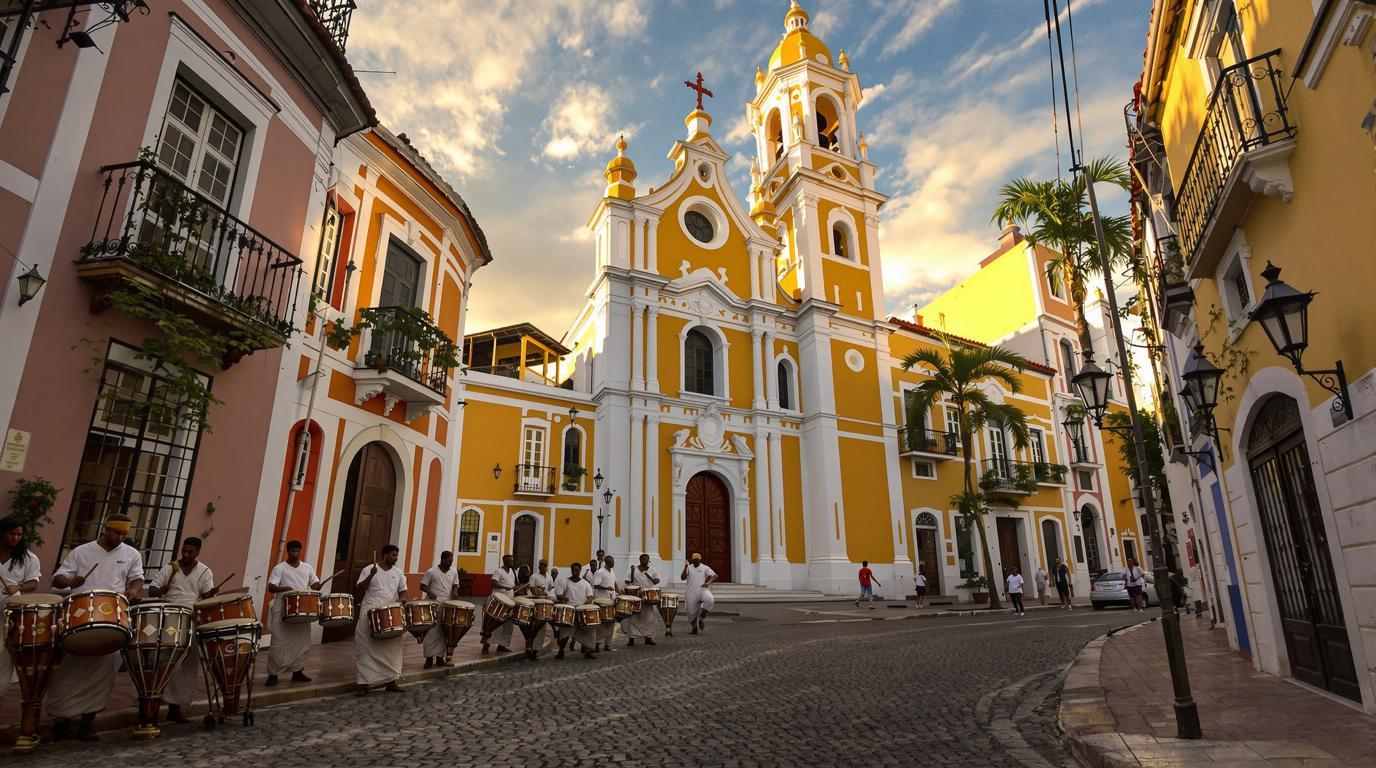Salvador’s intoxicating blend of Afro-Brazilian rhythms and Portuguese colonial architecture creates a cultural experience unlike anywhere else in the Americas. This vibrant coastal city — Brazil’s first capital and the heart of Bahia state — pulses with an energy that captivates visitors from the moment they arrive.
The soul of Brazil’s Black heritage
Often called Brazil’s “Capital of Happiness,” Salvador bears the distinction of being the center of Afro-Brazilian culture. The city received more enslaved Africans than any other location in the Americas, and today, over 80% of Salvador’s population has African ancestry.
“Salvador is where Africa and Europe collided in the New World, creating something entirely unique,” explains Maria Santos, a local cultural historian. “The fusion is visible in everything from our cuisine to our spiritual practices.”
Pelourinho: A UNESCO treasure frozen in time
Salvador’s historic center, Pelourinho, dazzles visitors with its candy-colored colonial buildings and baroque churches. This UNESCO World Heritage site features winding cobblestone streets lined with 17th and 18th-century Portuguese architecture that tells stories of both opulence and oppression.
The neighborhood’s central square, where enslaved people were once punished publicly, has transformed into a vibrant cultural hub where capoeira circles form spontaneously and the sounds of drums echo against centuries-old facades.
Where ancient African deities dance with Catholic saints
Salvador serves as the epicenter of Candomblé, a syncretic religion blending African spiritual traditions with Catholic elements. The faith emerged as enslaved Africans disguised their native beliefs under the veneer of Catholicism.
Today, local terreiros (temples) continue these ancient traditions, honoring orixás (deities) through hypnotic drumming, ritualistic dance, and colorful offerings. Visitors can witness these ceremonies with proper respect and permission from temple leaders.
The elevator that divided social classes
The city’s unique topography created a literal division between rich and poor. The Lacerda Elevator, an art deco landmark, connects Salvador’s upper and lower sections with a 72-meter lift that once separated the elite from the working class.
Today, the elevator provides spectacular views of All Saints’ Bay and serves as a reminder of how Salvador embraces rather than hides its complicated past. Like other dramatic coastal cities, Salvador’s beauty is inseparable from its geographic challenges.
Tasting Bahia’s African-influenced cuisine
Salvador’s culinary scene bursts with bold flavors infused with African spices and techniques. The iconic acarajé — deep-fried black-eyed pea fritters filled with vatapá (shrimp paste) and caruru (okra stew) — represents the perfect African-Brazilian fusion.
“Our food tells our history,” says Chef Paulo Machado. “The dendê oil, okra, and black-eyed peas connect us directly to West Africa, while the preparation methods have evolved here in Bahia.”
Music that moves the soul and body
Salvador’s streets pulse with rhythms that have influenced world music. The city birthed samba-reggae and hosts one of the planet’s most spectacular Carnavals, rivaling Rio’s famous celebration but with a distinctly Afro-Brazilian character reminiscent of other culturally diverse regions.
Hidden corners beyond the tourist trail
While most visitors focus on Pelourinho, locals recommend exploring the Solar do Unhão, an old sugar mill transformed into an art museum, or visiting the quieter beaches north of the city. The Church of Nosso Senhor do Bonfim, where colorful wish ribbons adorn the gates, offers insight into Salvador’s unique spiritual landscape.
For a truly authentic experience, journey to hidden neighborhoods like Santo Antônio Além do Carmo, where locals enjoy stunning views without crowds.
Between two worlds
Salvador exists in beautiful contradictions — simultaneously modern and ancient, African and European, sacred and profane. Its religious traditions and architecture create a cultural landscape as diverse as Monument Valley’s sacred spaces.
When you wander Salvador’s streets, you’re not just visiting Brazil’s most culturally rich city — you’re experiencing a living museum where Africa and Europe continue their centuries-old dance, creating something entirely unique in the Americas. The rhythm, color, and spirit of Salvador don’t just entertain tourists; they reveal the very soul of Brazil itself.
